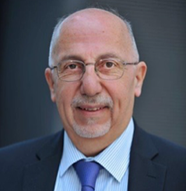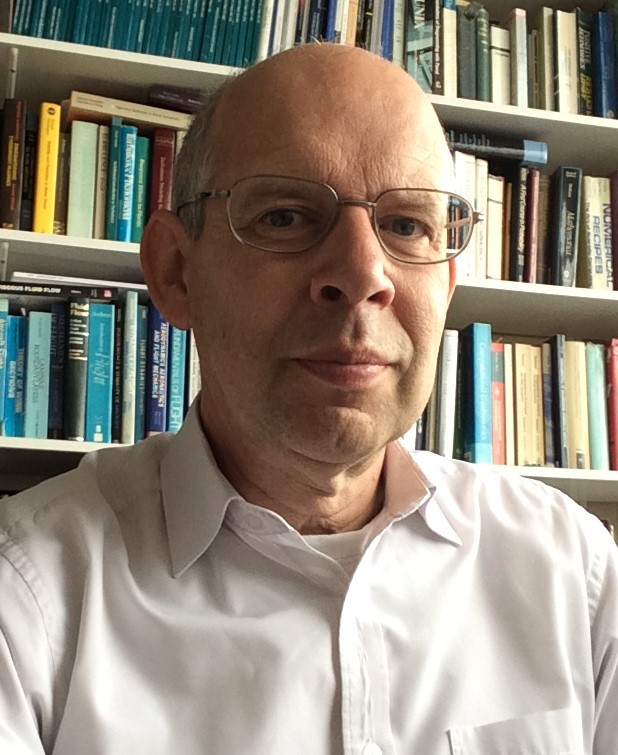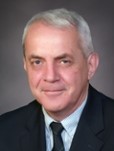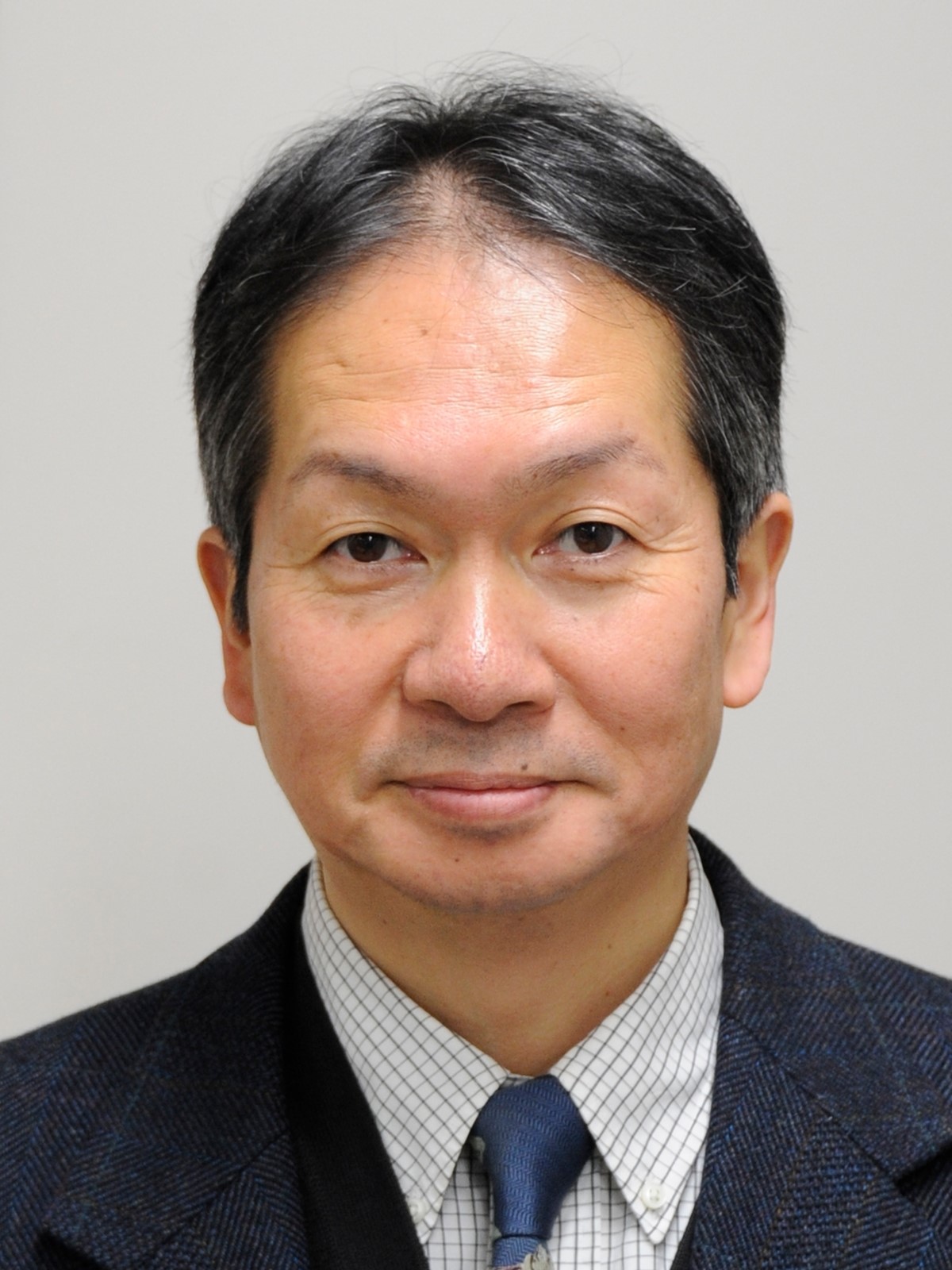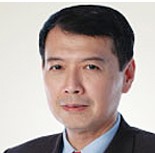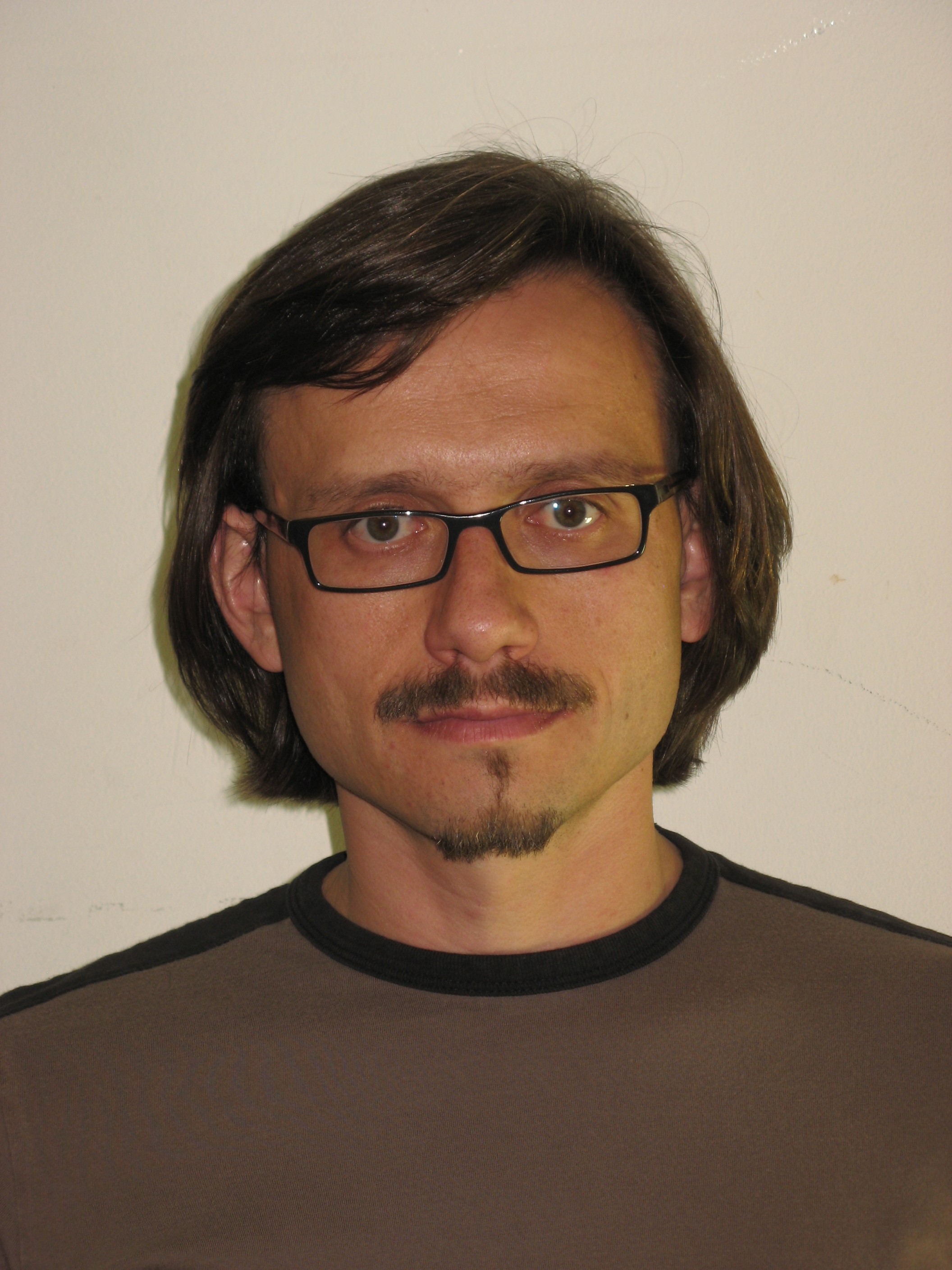Plenary Lectures
BIO
Dr Henrik Lund is Professor in Energy Planning at Aalborg University and Editor-in-Chief of Elsevier International journal ENERGY. For more than 25 years, his area of expertise has been energy system analysis, energy planning and energy economics. He is the author of more than 200 books and articles and on the Thomson Reuters list of the most highly cited researches in the world.Abstract
This lecture presents the learning of a series of studies that analyze the problems and perspectives of converting the present energy system into a 100 percent renewable energy system using a smart energy systems approach. As opposed to, for instance, the smart grid concept, which takes a sole focus on the electricity sector, smart energy systems include the entire energy system in its approach to identifying suitable energy infrastructure designs and operation strategies including transportation and aviation. The typical smart grid sole focus on the electricity sector often leads to the definition of transmission lines, flexible electricity demands and electricity storage as the primary means to deal with the integration of fluctuating renewable sources. However, the nature of wind power and similar sources has the consequence that these measures are neither very effective nor cost-efficient. The most effective and least-cost solutions are to be found when the electricity sector is combined with the heating sector and/or the transportation sector. Moreover, the combination of electricity and gas infrastructures may play an important role in the design of future renewable energy systems. This presentation illustrates why electricity smart grids should be seen as part of overall smart energy systems and with the case of Denmark illustrate how to design such future energy system.Abstract
Energy its efficient use in production is key to ensuring the healthy functioning of the world economies. Climate change, together with the haze in growing megalopolises, and water scarcity in many areas are the key environmental challenges of our time. Polluted air and water, especially in places with high population density and high resource demands, have been posing an increasing threat to the mankind. To solve those issues, a complex thinking is very much needed. Traditionally, the involvement of process, mechanical and chemical engineering was considered as a cornerstone of a successful outcome. The close and strategic collaboration from most fields is a strong requirement. The complex systems thinking requires a close synergy of technologists, managers and economists, policymakers and politicians and related social scientists. In this context, ensuring cleaner energy is the necessary condition for cleaner production, especially for reducing the emissions of greenhouse gases and other pollutants, which are directly related to the types and loads of the energy sources used.Introduction
They are various emerging methodologies of sustainability assessment. The footprint methodology is one of gaining considerable attention. Greenhouse gases (ghg – rather than just carbon) footprint becomes a widely accepted environmental accounting tool for business managers, policy makers and non-governmental organisations, attempting to identify mitigation measures that reduce the threat of climate change. The industry is increasingly engaged as a part of policy development and product design.ANALYSIS AND MODELLING
As an illustrative case study of a toll following complex systems thinking presents the development of Process Integration. It originated from Heat Integration to target the minimum heat requirements and following the demand being extended to Total Sites, Locally Integrated energy systems and even to self-sufficient regions methodology. To cover the complexity with wider scope targeting GHG and haze creating emissions, integration of renewable energy sources, biofuels, waste and effluents supply chains, investment, property and material recovery targeting.RESULTS AND DISCUSSION
The presentation will be concluded by suggestions for future research and the discussion and exchange of ideas are most welcome.BIO
 Prof Dr-Hab Jiří Jaromír KLEMEŠ, DSc Head of
“Sustainable Process Integration Laboratory – SPIL”, NETME Centre, Faculty of
Mechanical Engineering, Brno University of Technology - VUT Brno, CZ and
Emeritus Professor at “Centre for Process Systems Engineering and
Sustainability”, Pázmány Péter Catholic University, Budapest, and at FIT,
Pannonia University, Veszprem, HU.
Prof Dr-Hab Jiří Jaromír KLEMEŠ, DSc Head of
“Sustainable Process Integration Laboratory – SPIL”, NETME Centre, Faculty of
Mechanical Engineering, Brno University of Technology - VUT Brno, CZ and
Emeritus Professor at “Centre for Process Systems Engineering and
Sustainability”, Pázmány Péter Catholic University, Budapest, and at FIT,
Pannonia University, Veszprem, HU. Previously the Project Director, Senior Project Officer and Hon Reader at Department of Process Integration at UMIST, The University of Manchester and the University of Edinburgh, UK. Founder and a long-term Head of the Centre for Process Integration and Intensification – CPI2, University of Pannonia, Veszprém, Hungary. Awarded by the EC with Marie Curie Chair of Excellence (EXC). Track record of managing and coordinating 93 major EC, NATO and UK Know-How projects. Research funding attracted over 23 M€.
Co-Editor-in-Chief of Journal of Cleaner Production and Chemical Engineering Transactions, Subject Editor of ENERGY and Emeritus Executive Editor of Applied Thermal Engineering. The founder and President of 22 y of PRES (Process Integration for Energy Saving and Pollution Reduction) conferences. Chairperson of CAPE Working Party of EFCE, a member of WP on Process Intensification and of the EFCE Sustainability platform. He authored and coauthored over 400 papers, h-index reaching 50. A number of books published by Elsevier, Woodhead, McGraw-Hill; Ashgate Publishing Cambridge; Springer; WILEY-VCH; Taylor & Francis).
Several times Distinguished Visiting Professor at Universiti Teknologi Malaysia and University Technology Petronas, Malaysia; Xi’an Jiaotong University; the South China University of Technology, Guangzhou and Tianjin University in China; University of Maribor, Slovenia; the Brno University of Technology and the Russian Mendeleev University of Chemical Technology, Moscow. Doctor Honoris Causa of Kharkiv National University “Kharkiv Polytechnic Institute” in Ukraine, the University of Maribor in Slovenia, University POLITEHNICA Bucharest, Romania. “Honorary Doctor of Engineering Universiti Teknologi Malaysia”. Awarded with “Honorary Membership of Czech Society of Chemical Engineering", "European Federation of Chemical Engineering (EFCE) Life-Time Achievements Award" and "Pro Universitaire Pannonica" Gold Medal.
Abstract
A tremendous effort has been devoted to improving the energy efficiency of home appliances around the world over the past 2 decades, where the adoption of energy labelling, and the enforcement of Minimum Energy Performance Standards (MEPSs) have led to significant energy savings. These efforts are continuing to bring innovation in refrigerator cabinet (i.e. advanced insulation, improved gaskets), sealed refrigeration system (e.g. low GWP refrigerants, efficient fans, compressors and heat exchangers, adaptive defrosts etc.), user-friendly features (e.g. double doors, internet connectivity, on-line access, internal cameras, music/TV) and legislative improvements enforcing more stringent MEPSs. Increased global competition and improved energy efficiency policies of various governments are responsible for bringing innovation into user friendly product development where more energy efficient products are now appearing in the market. The talk will present an overview of some of the recent advancements including novel/alternative technologies that are responsible for the development of energy efficient household refrigerators.BIO
 Dr. Bansal currently works for Viking
Range, Middleby Corporation (USA) as their R&D Lead of Energy Efficiency and
Refrigeration. Previously he worked at Oak Ridge National Laboratory (USA) as
Distinguished R&D Scientist during 2010-15, and the University of Auckland
(New Zealand) as Professor (Personal Chair) of Mechanical Engineering and
Associate Dean Postgraduate of the Faculty of Engineering during 1988-2012. He
has presented numerous plenaries and published over 260 technical papers and
three books. He is a Fellow of ASHRAE and Vice-President of Commission B1 of the
International Institute of Refrigeration. He is currently serving as an
Executive Editor of Applied Thermal Engineering, and Associate Editor of J.
Science and Technology for the Built Environment (previously HVAC&R), and J.
of Process Mechanical Engineering (IMechE, UK).
Dr. Bansal currently works for Viking
Range, Middleby Corporation (USA) as their R&D Lead of Energy Efficiency and
Refrigeration. Previously he worked at Oak Ridge National Laboratory (USA) as
Distinguished R&D Scientist during 2010-15, and the University of Auckland
(New Zealand) as Professor (Personal Chair) of Mechanical Engineering and
Associate Dean Postgraduate of the Faculty of Engineering during 1988-2012. He
has presented numerous plenaries and published over 260 technical papers and
three books. He is a Fellow of ASHRAE and Vice-President of Commission B1 of the
International Institute of Refrigeration. He is currently serving as an
Executive Editor of Applied Thermal Engineering, and Associate Editor of J.
Science and Technology for the Built Environment (previously HVAC&R), and J.
of Process Mechanical Engineering (IMechE, UK).BIO
Dr Henrik Lund is Professor in Energy Planning at Aalborg University and Editor-in-Chief of Elsevier International journal ENERGY. For more than 25 years, his area of expertise has been energy system analysis, energy planning and energy economics. He is the author of more than 200 books and articles and on the Thomson Reuters list of the most highly cited researches in the world.Abstract
This lecture presents the learning of a series of studies that analyze the problems and perspectives of converting the present energy system into a 100 percent renewable energy system using a smart energy systems approach. As opposed to, for instance, the smart grid concept, which takes a sole focus on the electricity sector, smart energy systems include the entire energy system in its approach to identifying suitable energy infrastructure designs and operation strategies including transportation and aviation. The typical smart grid sole focus on the electricity sector often leads to the definition of transmission lines, flexible electricity demands and electricity storage as the primary means to deal with the integration of fluctuating renewable sources. However, the nature of wind power and similar sources has the consequence that these measures are neither very effective nor cost-efficient. The most effective and least-cost solutions are to be found when the electricity sector is combined with the heating sector and/or the transportation sector. Moreover, the combination of electricity and gas infrastructures may play an important role in the design of future renewable energy systems. This presentation illustrates why electricity smart grids should be seen as part of overall smart energy systems and with the case of Denmark illustrate how to design such future energy system.BIO
Dr Henrik Lund is Professor in Energy Planning at Aalborg University and Editor-in-Chief of Elsevier International journal ENERGY. For more than 25 years, his area of expertise has been energy system analysis, energy planning and energy economics. He is the author of more than 200 books and articles and on the Thomson Reuters list of the most highly cited researches in the world.Abstract
This lecture presents the learning of a series of studies that analyze the problems and perspectives of converting the present energy system into a 100 percent renewable energy system using a smart energy systems approach. As opposed to, for instance, the smart grid concept, which takes a sole focus on the electricity sector, smart energy systems include the entire energy system in its approach to identifying suitable energy infrastructure designs and operation strategies including transportation and aviation. The typical smart grid sole focus on the electricity sector often leads to the definition of transmission lines, flexible electricity demands and electricity storage as the primary means to deal with the integration of fluctuating renewable sources. However, the nature of wind power and similar sources has the consequence that these measures are neither very effective nor cost-efficient. The most effective and least-cost solutions are to be found when the electricity sector is combined with the heating sector and/or the transportation sector. Moreover, the combination of electricity and gas infrastructures may play an important role in the design of future renewable energy systems. This presentation illustrates why electricity smart grids should be seen as part of overall smart energy systems and with the case of Denmark illustrate how to design such future energy system.BIO
Dr Henrik Lund is Professor in Energy Planning at Aalborg University and Editor-in-Chief of Elsevier International journal ENERGY. For more than 25 years, his area of expertise has been energy system analysis, energy planning and energy economics. He is the author of more than 200 books and articles and on the Thomson Reuters list of the most highly cited researches in the world.Abstract
This lecture presents the learning of a series of studies that analyze the problems and perspectives of converting the present energy system into a 100 percent renewable energy system using a smart energy systems approach. As opposed to, for instance, the smart grid concept, which takes a sole focus on the electricity sector, smart energy systems include the entire energy system in its approach to identifying suitable energy infrastructure designs and operation strategies including transportation and aviation. The typical smart grid sole focus on the electricity sector often leads to the definition of transmission lines, flexible electricity demands and electricity storage as the primary means to deal with the integration of fluctuating renewable sources. However, the nature of wind power and similar sources has the consequence that these measures are neither very effective nor cost-efficient. The most effective and least-cost solutions are to be found when the electricity sector is combined with the heating sector and/or the transportation sector. Moreover, the combination of electricity and gas infrastructures may play an important role in the design of future renewable energy systems. This presentation illustrates why electricity smart grids should be seen as part of overall smart energy systems and with the case of Denmark illustrate how to design such future energy system.BIO
Dr Henrik Lund is Professor in Energy Planning at Aalborg University and Editor-in-Chief of Elsevier International journal ENERGY. For more than 25 years, his area of expertise has been energy system analysis, energy planning and energy economics. He is the author of more than 200 books and articles and on the Thomson Reuters list of the most highly cited researches in the world.Abstract
This lecture presents the learning of a series of studies that analyze the problems and perspectives of converting the present energy system into a 100 percent renewable energy system using a smart energy systems approach. As opposed to, for instance, the smart grid concept, which takes a sole focus on the electricity sector, smart energy systems include the entire energy system in its approach to identifying suitable energy infrastructure designs and operation strategies including transportation and aviation. The typical smart grid sole focus on the electricity sector often leads to the definition of transmission lines, flexible electricity demands and electricity storage as the primary means to deal with the integration of fluctuating renewable sources. However, the nature of wind power and similar sources has the consequence that these measures are neither very effective nor cost-efficient. The most effective and least-cost solutions are to be found when the electricity sector is combined with the heating sector and/or the transportation sector. Moreover, the combination of electricity and gas infrastructures may play an important role in the design of future renewable energy systems. This presentation illustrates why electricity smart grids should be seen as part of overall smart energy systems and with the case of Denmark illustrate how to design such future energy system.BIO
Dr Henrik Lund is Professor in Energy Planning at Aalborg University and Editor-in-Chief of Elsevier International journal ENERGY. For more than 25 years, his area of expertise has been energy system analysis, energy planning and energy economics. He is the author of more than 200 books and articles and on the Thomson Reuters list of the most highly cited researches in the world.Abstract
This lecture presents the learning of a series of studies that analyze the problems and perspectives of converting the present energy system into a 100 percent renewable energy system using a smart energy systems approach. As opposed to, for instance, the smart grid concept, which takes a sole focus on the electricity sector, smart energy systems include the entire energy system in its approach to identifying suitable energy infrastructure designs and operation strategies including transportation and aviation. The typical smart grid sole focus on the electricity sector often leads to the definition of transmission lines, flexible electricity demands and electricity storage as the primary means to deal with the integration of fluctuating renewable sources. However, the nature of wind power and similar sources has the consequence that these measures are neither very effective nor cost-efficient. The most effective and least-cost solutions are to be found when the electricity sector is combined with the heating sector and/or the transportation sector. Moreover, the combination of electricity and gas infrastructures may play an important role in the design of future renewable energy systems. This presentation illustrates why electricity smart grids should be seen as part of overall smart energy systems and with the case of Denmark illustrate how to design such future energy system.Abstract
A tremendous effort has been devoted to improving the energy efficiency of home appliances around the world over the past 2 decades, where the adoption of energy labelling, and the enforcement of Minimum Energy Performance Standards (MEPSs) have led to significant energy savings. These efforts are continuing to bring innovation in refrigerator cabinet (i.e. advanced insulation, improved gaskets), sealed refrigeration system (e.g. low GWP refrigerants, efficient fans, compressors and heat exchangers, adaptive defrosts etc.), user-friendly features (e.g. double doors, internet connectivity, on-line access, internal cameras, music/TV) and legislative improvements enforcing more stringent MEPSs. Increased global competition and improved energy efficiency policies of various governments are responsible for bringing innovation into user friendly product development where more energy efficient products are now appearing in the market. The talk will present an overview of some of the recent advancements including novel/alternative technologies that are responsible for the development of energy efficient household refrigerators.BIO
 Dr. Bansal currently works for Viking
Range, Middleby Corporation (USA) as their R&D Lead of Energy Efficiency and
Refrigeration. Previously he worked at Oak Ridge National Laboratory (USA) as
Distinguished R&D Scientist during 2010-15, and the University of Auckland
(New Zealand) as Professor (Personal Chair) of Mechanical Engineering and
Associate Dean Postgraduate of the Faculty of Engineering during 1988-2012. He
has presented numerous plenaries and published over 260 technical papers and
three books. He is a Fellow of ASHRAE and Vice-President of Commission B1 of the
International Institute of Refrigeration. He is currently serving as an
Executive Editor of Applied Thermal Engineering, and Associate Editor of J.
Science and Technology for the Built Environment (previously HVAC&R), and J.
of Process Mechanical Engineering (IMechE, UK).
Dr. Bansal currently works for Viking
Range, Middleby Corporation (USA) as their R&D Lead of Energy Efficiency and
Refrigeration. Previously he worked at Oak Ridge National Laboratory (USA) as
Distinguished R&D Scientist during 2010-15, and the University of Auckland
(New Zealand) as Professor (Personal Chair) of Mechanical Engineering and
Associate Dean Postgraduate of the Faculty of Engineering during 1988-2012. He
has presented numerous plenaries and published over 260 technical papers and
three books. He is a Fellow of ASHRAE and Vice-President of Commission B1 of the
International Institute of Refrigeration. He is currently serving as an
Executive Editor of Applied Thermal Engineering, and Associate Editor of J.
Science and Technology for the Built Environment (previously HVAC&R), and J.
of Process Mechanical Engineering (IMechE, UK).
Abstract
A tremendous effort has been devoted to improving the energy efficiency of home appliances around the world over the past 2 decades, where the adoption of energy labelling, and the enforcement of Minimum Energy Performance Standards (MEPSs) have led to significant energy savings. These efforts are continuing to bring innovation in refrigerator cabinet (i.e. advanced insulation, improved gaskets), sealed refrigeration system (e.g. low GWP refrigerants, efficient fans, compressors and heat exchangers, adaptive defrosts etc.), user-friendly features (e.g. double doors, internet connectivity, on-line access, internal cameras, music/TV) and legislative improvements enforcing more stringent MEPSs. Increased global competition and improved energy efficiency policies of various governments are responsible for bringing innovation into user friendly product development where more energy efficient products are now appearing in the market. The talk will present an overview of some of the recent advancements including novel/alternative technologies that are responsible for the development of energy efficient household refrigerators.BIO
 Dr. Bansal currently works for Viking
Range, Middleby Corporation (USA) as their R&D Lead of Energy Efficiency and
Refrigeration. Previously he worked at Oak Ridge National Laboratory (USA) as
Distinguished R&D Scientist during 2010-15, and the University of Auckland
(New Zealand) as Professor (Personal Chair) of Mechanical Engineering and
Associate Dean Postgraduate of the Faculty of Engineering during 1988-2012. He
has presented numerous plenaries and published over 260 technical papers and
three books. He is a Fellow of ASHRAE and Vice-President of Commission B1 of the
International Institute of Refrigeration. He is currently serving as an
Executive Editor of Applied Thermal Engineering, and Associate Editor of J.
Science and Technology for the Built Environment (previously HVAC&R), and J.
of Process Mechanical Engineering (IMechE, UK).
Dr. Bansal currently works for Viking
Range, Middleby Corporation (USA) as their R&D Lead of Energy Efficiency and
Refrigeration. Previously he worked at Oak Ridge National Laboratory (USA) as
Distinguished R&D Scientist during 2010-15, and the University of Auckland
(New Zealand) as Professor (Personal Chair) of Mechanical Engineering and
Associate Dean Postgraduate of the Faculty of Engineering during 1988-2012. He
has presented numerous plenaries and published over 260 technical papers and
three books. He is a Fellow of ASHRAE and Vice-President of Commission B1 of the
International Institute of Refrigeration. He is currently serving as an
Executive Editor of Applied Thermal Engineering, and Associate Editor of J.
Science and Technology for the Built Environment (previously HVAC&R), and J.
of Process Mechanical Engineering (IMechE, UK).